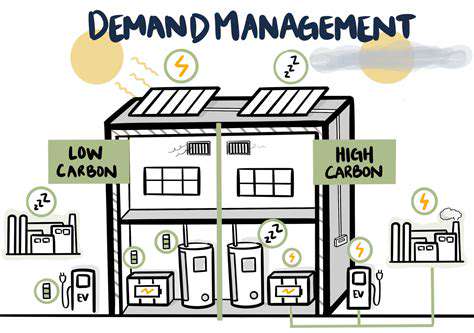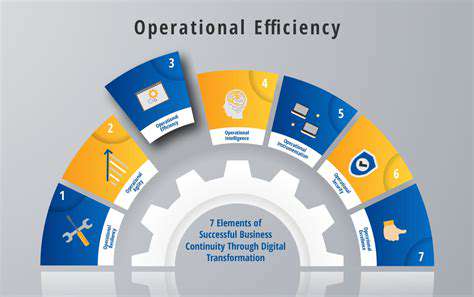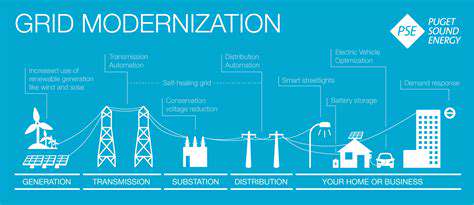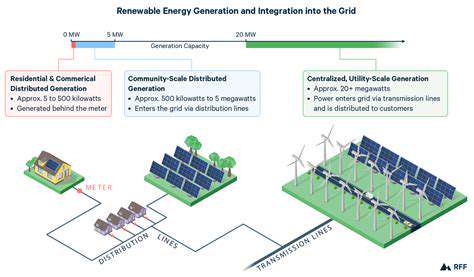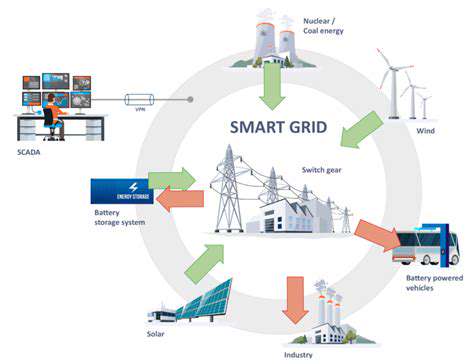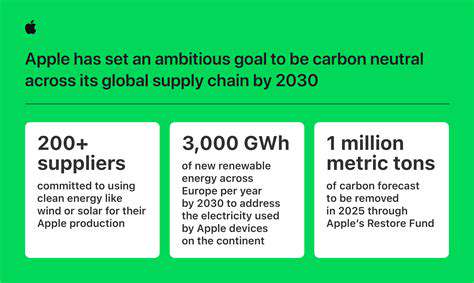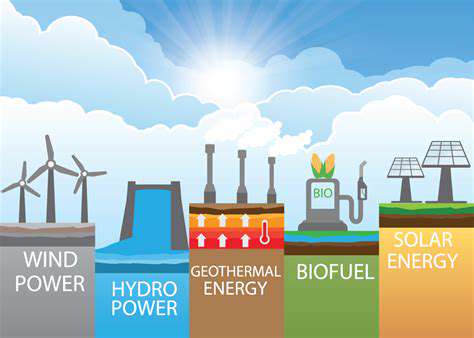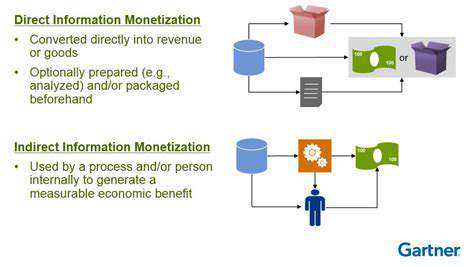Advanced Energy Storage Technologies
The Rise of Solid Electrolyte Batteries
Modern energy storage is undergoing a transformation as solid electrolyte batteries emerge to address lithium-ion limitations. These innovative power sources replace volatile liquid components with stable solid materials, offering numerous benefits. The shift to solid electrolytes brings enhanced safety measures, permitting operation at elevated temperatures while maintaining structural integrity. This fundamental redesign allows for greater energy storage capacity within the same physical space, opening new possibilities for electric transportation and consumer electronics.
Researchers currently face the challenge of optimizing ion movement through solid materials. Teams worldwide are testing various ceramic compounds and polymer blends to identify materials that balance conductivity with durability. The success of these investigations will determine when we see these batteries in everyday use, as material science continues to push boundaries in energy storage technology.
Modular Energy: The Flow Battery Approach
Flow batteries present a unique solution for scalable power storage through their innovative liquid electrolyte design. These systems maintain energy in external reservoirs, allowing capacity adjustments by simply changing fluid volume. This adaptable architecture proves particularly valuable for managing renewable energy integration and stabilizing electrical grids against demand fluctuations.
Various flow battery configurations exist, each with distinct characteristics. The most common models use reversible chemical reactions between liquid components to store and release energy. While their energy concentration falls short of conventional batteries, their unparalleled scalability makes them ideal for large installations where space isn't the primary constraint. Ongoing research aims to improve their energy efficiency while maintaining their modular advantages.
Metal-Air Technology: High-Capacity Potential
Metal-oxygen battery systems represent a promising avenue for surpassing traditional energy density limitations. By utilizing atmospheric oxygen in their chemical reactions, these devices achieve remarkable energy-to-weight ratios. Their simple yet effective design could significantly impact how we power everything from vehicles to industrial equipment in the coming decades.
Current development efforts focus on creating more durable catalysts for the oxygen exchange process. Finding materials that resist degradation while maintaining high reactivity remains the primary obstacle preventing widespread adoption. Researchers continue testing various metal alloys and catalytic coatings to address these challenges and unlock the technology's full potential.
Ultracapacitors: Instantaneous Power Solutions
Electrostatic energy storage devices fill a critical niche in power management systems. Unlike chemical batteries, these components can absorb and release energy almost instantaneously, making them perfect for applications requiring immediate power bursts. Their rapid response characteristics have proven invaluable in hybrid vehicle systems and industrial power regulation.
While energy storage capacity remains lower than conventional batteries, their virtually unlimited charge cycles and instant response compensate for this limitation in specific use cases. Engineers frequently combine them with traditional batteries to create hybrid systems that leverage the strengths of both technologies for optimal performance.
Solid-State Technology: The Next Generation
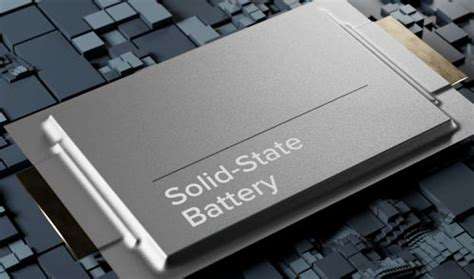
Revolutionizing Energy Storage
The transition to solid electrolyte systems marks a significant evolution in power storage technology. By eliminating flammable components, these batteries address critical safety concerns that have plagued previous generations. This advancement could transform multiple industries by providing safer, more reliable power solutions for everything from personal electronics to transportation networks.
Beyond safety improvements, these systems offer potential performance benefits. Early prototypes suggest possible charging speed improvements and extended operational lifespans, though real-world testing continues to validate these claims under various conditions.
Key Benefits
Safety represents the most immediate advantage of these new battery designs. Without combustible liquids, the risk of thermal runaway events drops dramatically. This safety improvement could accelerate electric vehicle adoption by alleviating consumer concerns about battery-related incidents.
Performance metrics also show promise, with laboratory tests indicating potential energy density improvements over current technologies. These gains could translate to longer device operation between charges or reduced weight for equivalent power capacity - both critical factors in mobile applications.
Development Challenges
Manufacturing complexity currently presents the most significant barrier to widespread adoption. Production costs remain high due to specialized material requirements and fabrication processes. Industry analysts suggest that scaling production could reduce costs by 40-60% within five years as techniques improve and supply chains mature.
Material scientists continue working to improve solid electrolyte performance characteristics. The ideal material must simultaneously facilitate rapid ion transfer while maintaining structural stability through thousands of charge cycles - a challenging combination that requires continued research investment.
Potential Applications
Transportation stands to benefit significantly from these technological advancements. Electric vehicles could see range improvements while maintaining or reducing charging times, addressing two key consumer concerns. The aerospace industry also shows growing interest in these power sources for both commercial and military applications.
Beyond mobility, grid storage systems could leverage these batteries' safety and longevity for renewable energy integration. Their stability makes them particularly suitable for remote installations where maintenance access proves difficult or dangerous.
Flow Battery Systems: Flexible Energy Storage
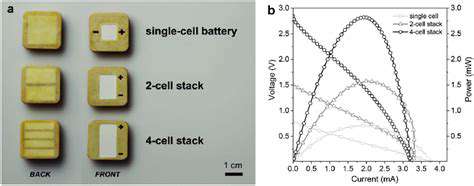
Adaptable Power Solutions
Flow battery technology offers unprecedented flexibility in energy system design. The separation of energy capacity from power output allows for customized configurations tailored to specific needs. This modular approach enables cost-effective scaling that traditional battery systems struggle to match, particularly for large-scale applications.
Recent design innovations have improved system efficiency while reducing maintenance requirements. Modern flow battery installations now achieve round-trip efficiencies competitive with other storage technologies, making them increasingly attractive for commercial and utility-scale projects.
Technological Progress
Material science advancements have yielded improved electrolyte formulations with better stability and energy density. Researchers have developed novel membrane materials that reduce energy losses while withstanding harsh operating conditions. These improvements contribute to longer system lifespans and reduced total cost of ownership.
System architecture has also evolved, with newer designs incorporating advanced control systems that optimize performance based on real-time conditions. These smart systems can automatically adjust operating parameters to maximize efficiency and extend component life.
Economic and Environmental Factors
While initial capital costs remain higher than some alternatives, flow battery systems demonstrate favorable long-term economics. Their extended operational life and minimal degradation translate to lower lifetime costs for many applications. Environmental impact assessments show promise, particularly when compared to resource-intensive alternatives like lithium mining.
The industry continues working to reduce material costs and improve recycling processes. Several manufacturers have established take-back programs to recover valuable components, further enhancing the technology's sustainability profile.
Ultracapacitor Technology: Instant Power Delivery
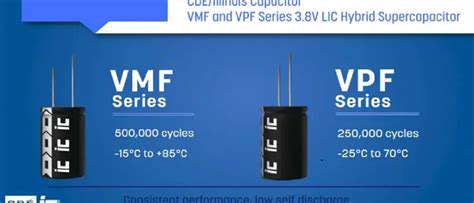
Performance Characteristics
Electrostatic storage devices distinguish themselves through rapid energy transfer capabilities unmatched by chemical batteries. These components can complete full charge cycles in seconds rather than hours, making them ideal for applications requiring immediate power availability. Their ability to handle millions of cycles without significant degradation provides exceptional long-term value in demanding environments.
Material innovations continue to push performance boundaries, with graphene-enhanced electrodes showing particular promise. These advanced materials increase surface area while maintaining conductivity, potentially boosting energy density without sacrificing power delivery speed.
Transportation Applications
In electric mobility systems, these components excel at handling peak power demands. They effectively supplement primary batteries during acceleration and recover braking energy more efficiently than battery-only systems. This synergy improves overall system efficiency while reducing strain on the main energy storage components.
Public transit systems have begun adopting hybrid configurations that leverage these devices' strengths. Several cities now operate buses that combine them with smaller batteries, achieving both performance and cost benefits.
Renewable Integration
Variable energy sources like wind and solar benefit greatly from rapid-response storage solutions. These components can smooth output fluctuations that would otherwise destabilize power grids. Their instantaneous response helps maintain consistent power quality as renewable generation levels change throughout the day.
Microgrid installations increasingly incorporate them to handle sudden load changes. This application proves particularly valuable in remote locations where grid stability remains challenging to maintain with conventional solutions alone.
Manufacturing Outlook
Production economics continue improving as manufacturing processes mature. Automated assembly techniques and material innovations are reducing costs while maintaining quality standards. Industry analysts project price parity with high-end batteries for certain applications within the next three to five years.
Standardization efforts are also progressing, with international organizations working to establish performance benchmarks and safety protocols. These developments should further accelerate adoption across multiple industries.

